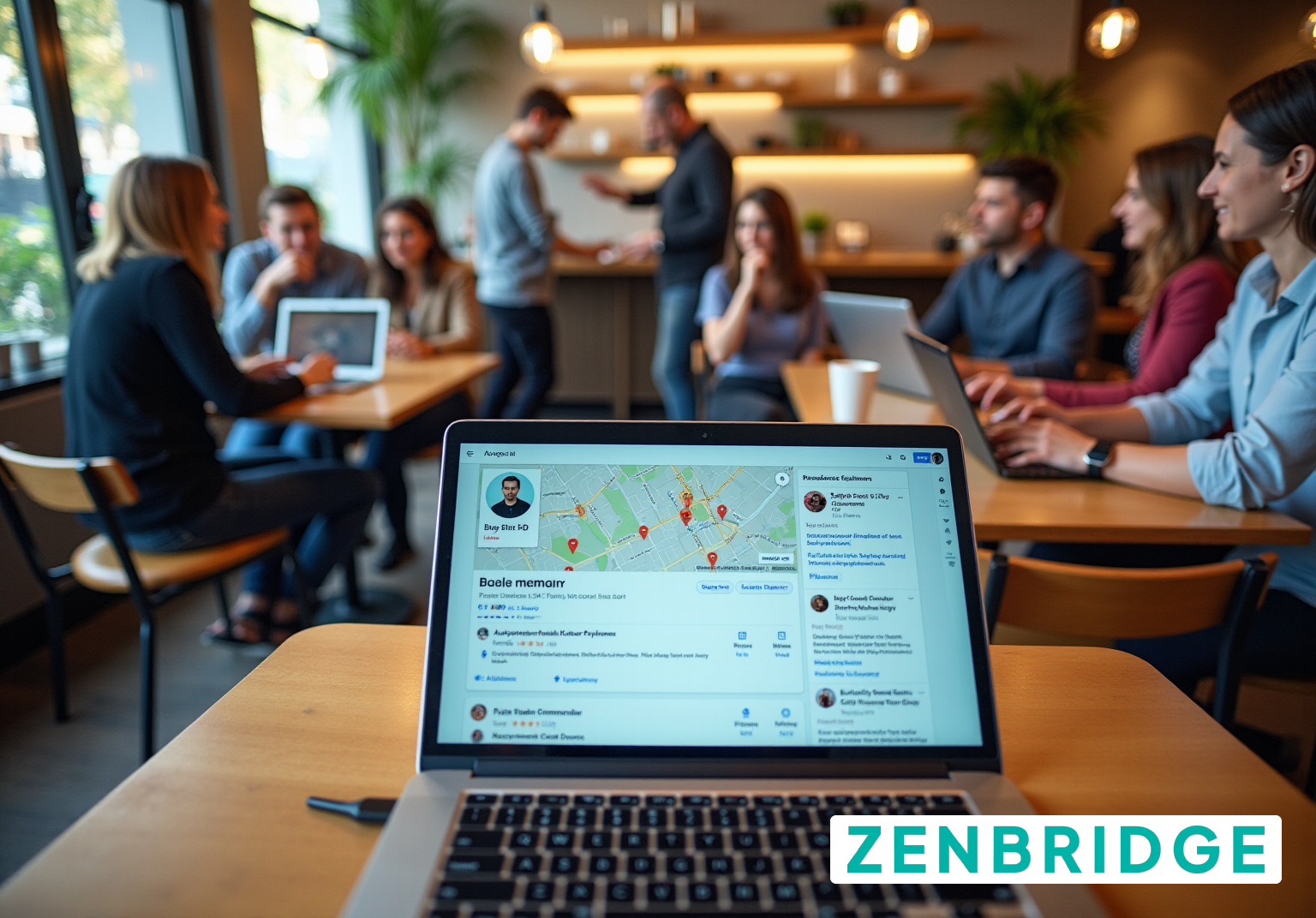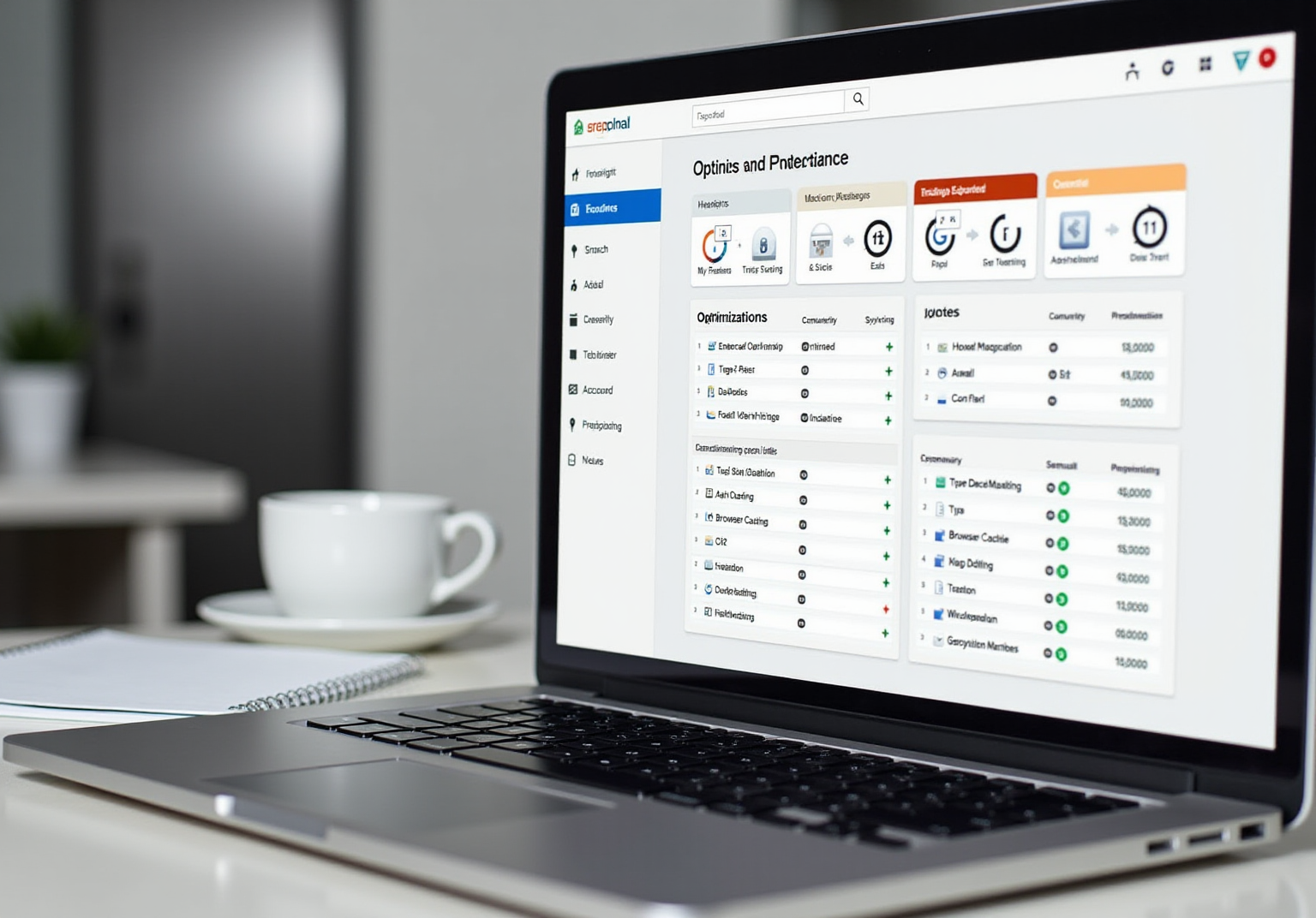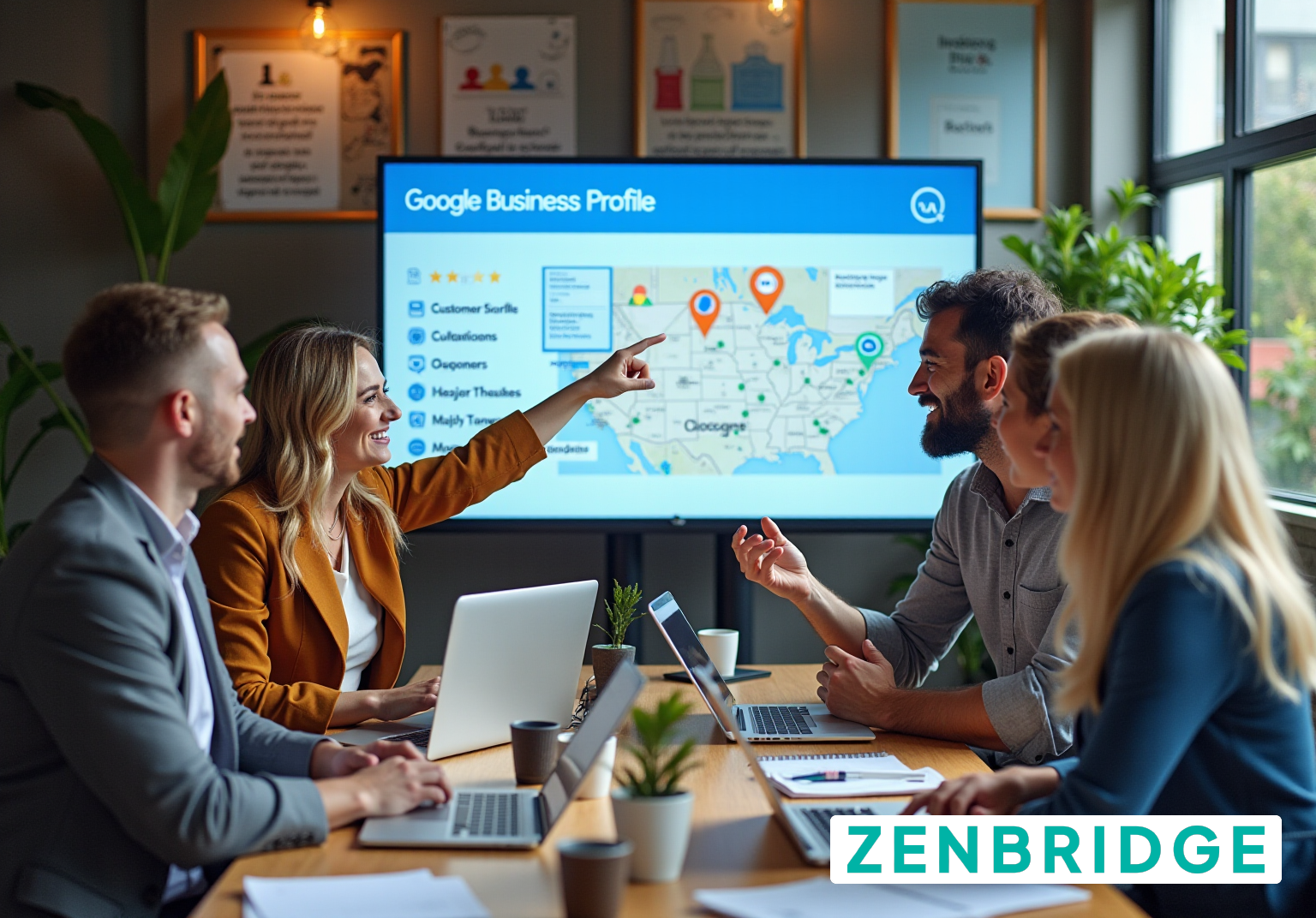
10 Essential Local SEO Strategies for Small Business Success

Overview
The article outlines ten essential local SEO strategies that can significantly contribute to small business success. By optimising Google Business Profiles, encouraging customer reviews, developing geo-targeted content, and employing cohesive marketing strategies, businesses can enhance their online visibility and attract more local customers. Furthermore, various statistics indicate the importance of local search optimization, reinforcing the need for these strategies. In conclusion, implementing these tactics can lead to measurable improvements in local engagement and customer acquisition.
Introduction
In an increasingly digital marketplace, small businesses encounter the challenge of distinguishing themselves amid fierce competition. Local SEO strategies have emerged as essential tools for enhancing visibility and attracting nearby customers. This often-overlooked pathway to success can significantly impact a business's growth.
However, many business owners grapple with the question: what are the most effective local SEO techniques that can truly elevate their presence and drive engagement in their communities?
This article delves into ten essential strategies designed to transform local search performance, ensuring that small businesses not only survive but thrive in their local markets.
ZenBridge: Optimize Your Google Business Profile for Local Visibility
To enhance your Google Business Profile, ensure that all details are complete and precise. This includes your name, address, phone number, and operating hours. Additionally, use relevant keywords in your business description for effective local SEO and select appropriate categories. Consistently refresh your profile with updates, images, and promotions to attract prospective clients and improve your visibility through local SEO in nearby searches.
Furthermore, utilise the Q&A feature to address common customer inquiries directly on your profile. This not only enhances user experience but also builds trust among potential clients.
Encourage Customer Reviews to Boost Local SEO Rankings
To enhance your online reputation and boost your local SEO rankings, it is crucial to actively encourage satisfied customers to leave positive reviews on your Google Business Profile and other relevant platforms. Effective strategies for achieving this include:
- Sending follow-up emails after purchases
- Providing direct links to review sites
- Offering incentives for feedback
Engaging with reviews—both favourable and unfavourable—demonstrates that you value customer feedback. This engagement can significantly enhance your organisation's reputation. In fact, 89% of consumers examine how companies respond to reviews, underscoring the importance of this interaction in building trust.
Regularly monitoring reviews not only helps identify areas for improvement but also allows you to maintain a positive online presence. Given that 93% of consumers read reviews before making a purchase, fostering a robust review culture becomes essential for attracting new customers and driving sales.
Furthermore, companies with a greater number of favourable reviews often experience a significant rise in conversion rates. More Google reviews lead to increased website clicks, thereby enhancing online visibility. Thus, emphasising customer input and incorporating visual material in evaluations—which 51% of consumers favour—should be a crucial aspect of your local SEO strategy.

Develop Geo-Pages to Capture Local Search Traffic
To successfully attract regional traffic, businesses should develop geo-targeted landing pages for every service area they cover as part of their local SEO efforts. Each page must showcase distinctive content customised for that particular area, including regional landmarks, customer testimonials, and detailed descriptions of services provided. Incorporating regional keywords seamlessly throughout the content is essential for enhancing engine visibility and optimising local SEO, particularly given that 46% of Google queries have regional intent. For instance, a landscaping company might create a geo-page that highlights its offerings in a specific neighbourhood, referencing nearby parks and community events to connect with local residents.
Current best practices emphasise the importance of clear calls to action and easily accessible contact information on each geo-page, facilitating customer engagement. SEO experts observe that well-optimised geo-pages can significantly improve local SEO performance in regional search results. Did you know that companies with over 100 images on their My Business profile receive 520% more calls and 2717% more direction requests than those lacking images? This statistic highlights the importance of visual content in local SEO.
Moreover, focusing on long-tail keywords related to specific locations can improve local SEO, resulting in better conversion rates and a clearer path to ranking on Google’s first page. As Matt McGee suggests, 'niching down' is often the best strategy, as it reduces competition while increasing relevance. Furthermore, with 88% of consumers who perform a nearby inquiry on their mobile device visiting or contacting a store within 24 hours, optimising geo-pages becomes crucial for prompt customer interaction. By consistently refreshing and enhancing these geo-pages, companies can uphold their regional visibility and draw more qualified prospects.

Enhance Site Speed and Technical SEO for Better User Experience
To enhance site speed, consider the following strategies:
- Optimise images to reduce load times.
- Minimise HTTP requests to streamline performance.
- Leverage browser caching for quicker access on repeat visits.
Use tools like Google PageSpeed Insights to identify areas for improvement. Additionally, ensure that your website is optimised for local SEO, particularly for mobile use, as a significant amount of regional inquiries occur on mobile devices.
Implementing structured data markup can also improve how search engines understand your site. This enhancement may lead to better rankings, increasing your visibility online. By taking these steps, you can significantly improve your website's performance and user experience.

Utilize Paid Advertising to Target Local Customers Effectively
To successfully connect with nearby customers, leverage the power of platforms such as search engine ads and social media by utilising geo-targeting features. This approach allows your ads to be displayed to users within specific geographic areas, significantly enhancing relevance. For example, campaigns that employ geo-targeting alongside other marketing tactics have demonstrated a 35% higher engagement rate compared to those that use geo-targeting alone.
ZenBridge Consulting's Pro Growth Service takes this concept further by providing comprehensive advertising management along with solutions for local SEO. This ensures your company not only connects with the right audience but also enhances its online reputation. With guaranteed 5-star ratings and improved online visibility, ZenBridge helps service providers enhance their local SEO to stand out in local searches.
The Starter plan, which features no setup charge for initial clients, includes essential services such as:
- Updating your Business Profile
- Responding to reviews within 12 hours
Additionally, the Boost plan adds even more value with:
- 500 review-request SMS each month
- Priority support
Consider experimenting with various ad formats—search ads, display ads, and social media ads—to determine which resonates most with your audience. Monitoring performance metrics is crucial; adjusting your strategies based on these insights can lead to a remarkable increase in return on ad spend. In fact, businesses that leverage location-based marketing have reported up to a 70% increase in click-through rates, even with privacy constraints, demonstrating the potential of targeted advertising.
As regional advertising expenditure continues to rise, particularly on platforms like Google and Facebook, staying ahead of trends is essential for optimising your marketing effectiveness.

Create Engaging Content Tailored to Local Audiences
To effectively connect with your nearby audience, focus on local SEO by creating content that resonates through incorporating regional events, news, and community stories. Employing regional keywords and phrases is crucial for enhancing your content for local SEO and search engines. Consider creating diverse formats, such as blog posts, videos, and social media updates, that highlight your organisation's involvement in community activities.
Working together with nearby influencers or teaming up with other companies can greatly improve your reach and credibility. Indeed, 70% of consumers are more inclined to leave a review if they observe the business replying to its online feedback. Furthermore, storytelling that mirrors regional culture and events can cultivate a stronger bond with your audience, making your brand more relatable and reliable.
As regional inquiries continue to increase, with 46% of questions having community intent, implementing local SEO by emphasising community-driven content will not only enhance your visibility but also foster customer loyalty. Remember, being highlighted in the Map Pack is essential for local SEO, as 42% of users click on results in this pack during local inquiries. Moreover, customers are 70% more inclined to visit an establishment with a complete Google Business Profile, emphasising the significance of local SEO in enhancing your online presence.

Implement Schema Markup to Improve Local Search Results
Applying schema markup on your website is essential for providing search engines with organised information about your business. By utilising local SEO strategies like the LocalBusiness schema, you can indicate crucial details such as your company name, address, phone number, and operating hours. This organised information not only assists your business in appearing in nearby search results but also enhances visibility on Google Maps through local SEO efforts.
Furthermore, consistently refreshing your schema markup is vital to reflect any updates in your company information. This practise ensures that your business remains relevant and easily discoverable by potential customers.

Build Local Backlinks to Enhance Domain Authority
Establishing connexions with nearby enterprises, organisations, and influencers is crucial for acquiring backlinks. Engaging in community events, supporting regional initiatives, or collaborating on projects can enhance your local SEO by gaining exposure and building relationships with local websites. Additionally, consider submitting your business to regional directories and participating in guest blogging on relevant community sites to enhance your local SEO.
Ensure that the backlinks you acquire come from reputable sources. This practise will maximise their impact on your domain authority, ultimately enhancing your online presence and credibility.

Regularly Analyze Local SEO Performance for Continuous Improvement
To effectively monitor your local SEO performance, it's crucial to utilise tools such as Analytics and Search Console. Focus on essential metrics like organic traffic, keyword rankings, and conversion rates to accurately gauge your success. Consistently assess insights from your Business Profile to gain a deeper understanding of customer interactions and engagement levels. This data is invaluable for refining your strategies—identify areas that require improvement while also capitalising on tactics that yield positive results.
As industry specialists highlight, ongoing evaluation and adjustment are essential for preserving a competitive advantage in local SEO. Based on recent data, 46% of searches have regional intent, and 80% of US consumers look for nearby establishments online at least once a week. Incorporating insights from analytics professionals, such as Rachel Costello's emphasis on user-centric performance optimization, can further enhance your approach.
Furthermore, consider the impact of Google algorithm updates on your local SEO performance, as these can significantly affect your visibility and engagement. By staying informed and adaptable, you can ensure that your strategies remain effective in a constantly evolving digital landscape.
Integrate Marketing Strategies for a Cohesive Local SEO Approach
To achieve modest enterprise success, it is crucial to develop a cohesive marketing plan that seamlessly integrates local SEO, content marketing, social media, and paid advertising. Consistency in messaging across all platforms is essential, ensuring that each channel supports your local SEO objectives. For example, social media can be utilised to promote localised content and foster community engagement, while strategically leveraging paid ads to drive traffic to geo-targeted landing pages. Regular assessment and refinement of your strategies are necessary to ensure they work harmoniously, adapting to evolving trends and consumer behaviours.
As Anish Vijayan points out, companies should focus on being available when potential clients need their products or services, highlighting the importance of unified marketing strategies in attracting nearby customers. Successful collaborations, such as that between Digital Silk and Laser By Aleya, illustrate how a comprehensive approach can lead to significant increases in organic traffic and lower costs per lead.
Moreover, with 88% of customers reading Google Reviews before visiting a nearby establishment, managing online reviews becomes an integral part of your integrated marketing strategy. By aligning your marketing initiatives, you can enhance visibility, build trust, and ultimately drive more qualified leads to your business. Remember, 76% of local searches with intent result in a visit within 24 hours, highlighting the urgency of implementing local SEO strategies. Additionally, as consumer behaviour increasingly shifts towards mobile devices, optimising your marketing efforts for mobile is becoming more important.
Conclusion
Implementing effective local SEO strategies is essential for small businesses aiming to enhance their visibility and connect with nearby customers. By focusing on optimising their Google Business Profile, encouraging customer reviews, and creating geo-targeted content, businesses can significantly improve their local search rankings and attract more clients. Furthermore, the integration of technical SEO practises, such as site speed optimisation and schema markup, supports these efforts, ensuring a seamless user experience that keeps potential customers engaged.
Key strategies discussed include:
- The importance of actively managing online reviews to build trust and reputation
- Developing geo-pages tailored to specific locations
- Utilising paid advertising to reach local audiences effectively
Additionally, creating engaging, locally relevant content not only fosters community connexions but also boosts search engine visibility. Regular performance analysis allows businesses to refine their strategies and stay competitive in an ever-evolving digital landscape.
Ultimately, the significance of local SEO cannot be overstated. As consumer behaviour increasingly shifts towards localised searches, small businesses must prioritise these strategies to thrive. By adopting a cohesive marketing approach that integrates local SEO with content marketing and social media efforts, businesses can enhance their online presence, build lasting relationships with customers, and drive measurable success. Embracing these practises today will prepare businesses for a prosperous future in an increasingly competitive market.
Frequently Asked Questions
How can I optimise my Google Business Profile for local visibility?
To optimise your Google Business Profile, ensure all details are complete and accurate, including your name, address, phone number, and operating hours. Use relevant keywords in your business description and select appropriate categories. Regularly update your profile with new information, images, and promotions to enhance local SEO and attract potential clients.
What is the importance of customer reviews for local SEO?
Customer reviews are crucial for enhancing your online reputation and boosting local SEO rankings. Encouraging satisfied customers to leave positive reviews can significantly improve your business's visibility and trustworthiness. Engaging with both positive and negative reviews shows that you value customer feedback, which can enhance your organisation's reputation.
What strategies can I use to encourage customer reviews?
Effective strategies to encourage customer reviews include sending follow-up emails after purchases, providing direct links to review sites, and offering incentives for feedback. Engaging with reviews also helps build trust and maintain a positive online presence.
How do geo-targeted landing pages help with local SEO?
Geo-targeted landing pages help attract regional traffic by showcasing unique content tailored to specific service areas. This includes regional landmarks, customer testimonials, and detailed service descriptions. Incorporating regional keywords throughout the content enhances visibility and optimises local SEO.
What are the best practises for creating geo-pages?
Best practises for creating geo-pages include using clear calls to action, providing easily accessible contact information, and incorporating relevant regional keywords. Regularly refreshing these pages can improve local SEO performance and customer engagement.
Why is visual content important for local SEO?
Visual content is important for local SEO because businesses with a higher number of images on their Google Business profile receive significantly more calls and direction requests. Incorporating images can enhance online visibility and attract more customers.
How can using long-tail keywords improve local SEO?
Using long-tail keywords related to specific locations can improve local SEO by increasing relevance and reducing competition. This strategy can lead to better conversion rates and a clearer path to ranking on Google's first page.
What is the impact of mobile searches on local businesses?
A significant percentage of consumers (88%) who perform nearby inquiries on their mobile devices visit or contact a store within 24 hours. This emphasises the importance of optimising your online presence for prompt customer interaction.

